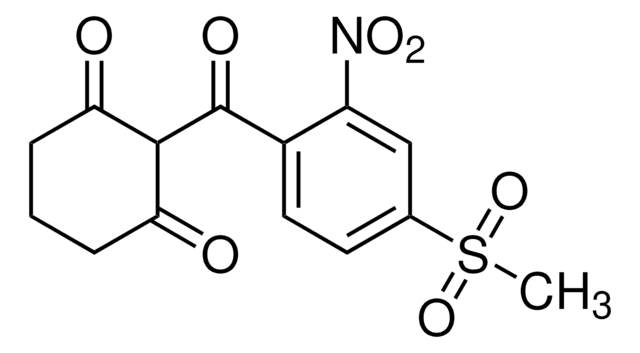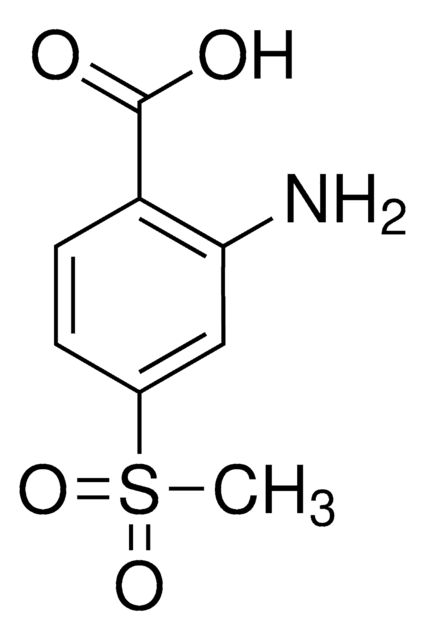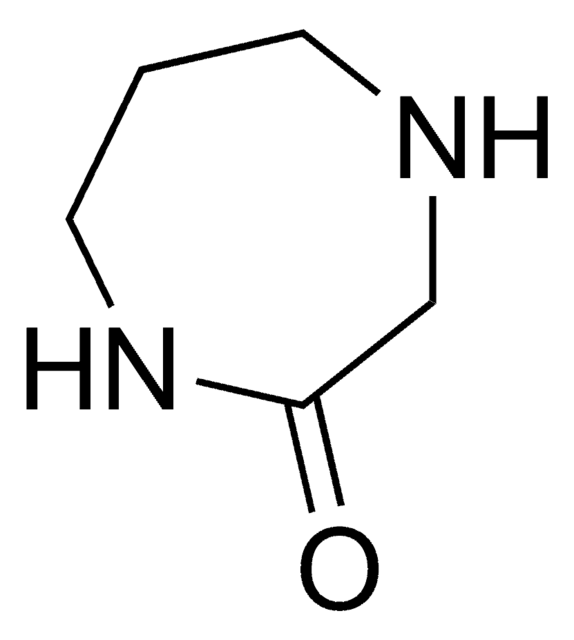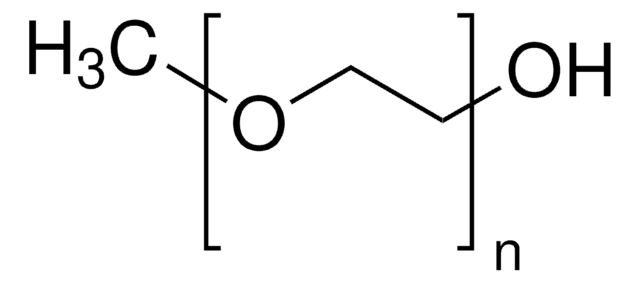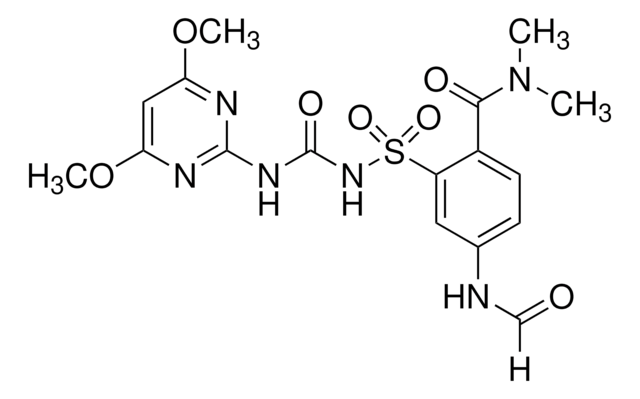CRM18124
Mesotrion Metabolite AMBA
certified reference material, TraceCERT®, Manufactured by: Sigma-Aldrich Production GmbH, Switzerland
Sinonimo/i:
2-Amino-4-(methylsulfonyl)benzoic acid
About This Item
Prodotti consigliati
Grado
certified reference material
TraceCERT®
Livello qualitativo
Nome Commerciale
TraceCERT®
Durata
limited shelf life, expiry date on the label
Produttore/marchio commerciale
Manufactured by: Sigma-Aldrich Production GmbH, Switzerland
Formato
neat
Temperatura di conservazione
−20°C
InChI
1S/C8H9NO4S/c1-14(12,13)5-2-3-6(8(10)11)7(9)4-5/h2-4H,9H2,1H3,(H,10,11)
KFOGGDGNOLZBNY-UHFFFAOYSA-N
Cerchi prodotti simili? Visita Guida al confronto tra prodotti
Descrizione generale
Certified content by quantitative NMR incl. uncertainty and expiry date are given on the certificate.
Download your certificate at: http://www.sigma-aldrich.com
AMBA (2-amino-4-methylsulfonylbenzoic acid) is one of the metabolites formed from biodegradation of parent Mesotrione. Mesotrione is a selective herbicide that belongs to the triketone family, developed for use in maize culture as a substitute for atrazine. It is used for pre- and post-emergence control of common broad-leaved weeds, primarily in corn (maize). It acts by inhibiting the p-hydroxyphenylpyruvate dioxygenase (HPPD) enzyme, thus, blocking the production of carotenoid pigments in susceptible plants.
Mesotrion is currently approved for its use in the European Union. Maximum residue levels (MRLs) have been set according to Reg (EU) 2017/626 for mesotrione for various products of plant and animal origin from 0.01 to 0.05 mg/kg. Compared to the parent compound, AMBA metabolite is more persistent in soil and possess greater toxicity in selected microorganisms.
Applicazioni
- Study the biodegradation and toxicity of herbicide mixtures mesotrione, nicosulfuron, and S-metolachlor by a bacterial strain, Bacillus sp. Mes11
- Isolation and characterization of a Bacillus sp. from cloud water for rapid biotransformation of mesotrione herbicide
- Investigation of mesotrione biodegradation products by the bacterial strain Bacillus sp. 3B6 using liquid chromatography/electrospray ionization quadrupole time-of-flight mass spectrometry (LC/ESI-QTOF-MS)
- Qualitative and quantitative metabolic profiling of mesotrione, by the bacterial strain Bacillus sp. 3B6 using NMR, LC-NMR, and LC-MS
- Method development for the determination of the mesotrione and its two metabolites, MNBA and AMBA in rice, rice plants, rice hulls, water, and soil using UPLC and triple-quadrupole tandem mass spectrometry
Prodotti consigliati
Note legali
Non trovi il prodotto giusto?
Prova il nostro Motore di ricerca dei prodotti.
Avvertenze
Warning
Indicazioni di pericolo
Classi di pericolo
Acute Tox. 4 Dermal - Acute Tox. 4 Inhalation - Acute Tox. 4 Oral - Aquatic Chronic 3 - Eye Irrit. 2 - Skin Irrit. 2 - STOT SE 3
Organi bersaglio
Respiratory system
Codice della classe di stoccaggio
11 - Combustible Solids
Classe di pericolosità dell'acqua (WGK)
WGK 3
Punto d’infiammabilità (°F)
Not applicable
Punto d’infiammabilità (°C)
Not applicable
Scegli una delle versioni più recenti:
Certificati d'analisi (COA)
Non trovi la versione di tuo interesse?
Se hai bisogno di una versione specifica, puoi cercare il certificato tramite il numero di lotto.
Possiedi già questo prodotto?
I documenti relativi ai prodotti acquistati recentemente sono disponibili nell’Archivio dei documenti.
Il team dei nostri ricercatori vanta grande esperienza in tutte le aree della ricerca quali Life Science, scienza dei materiali, sintesi chimica, cromatografia, discipline analitiche, ecc..
Contatta l'Assistenza Tecnica.